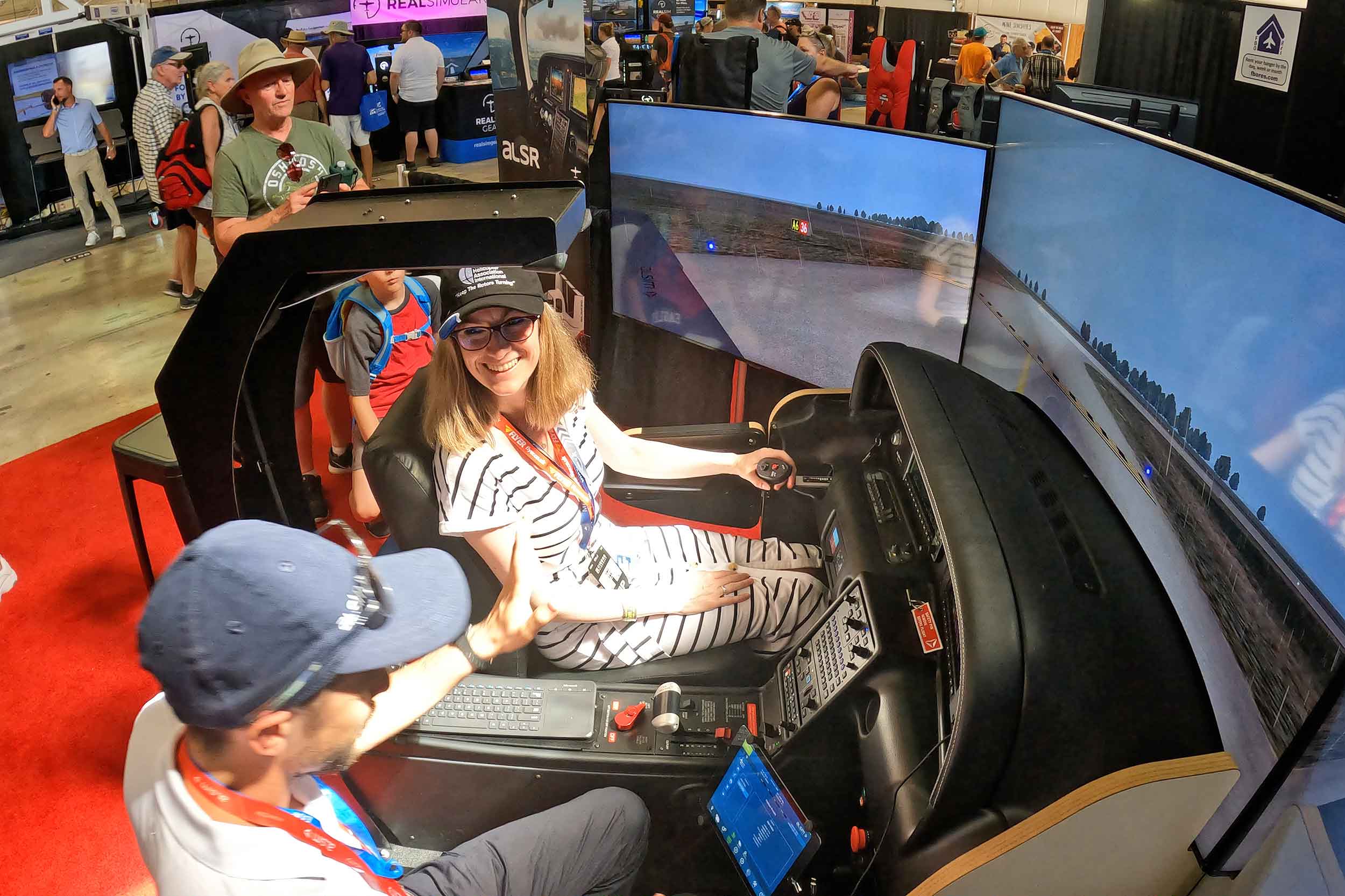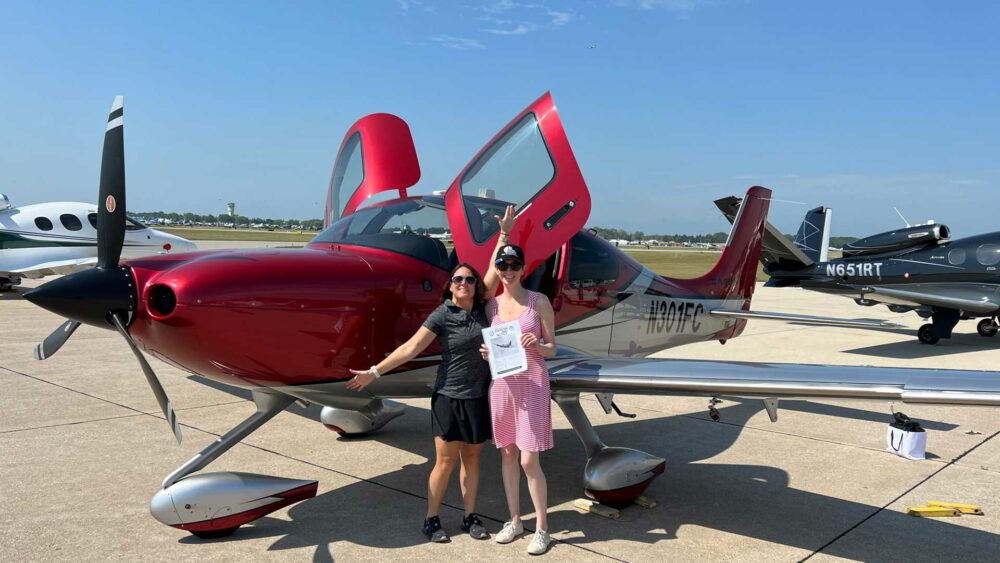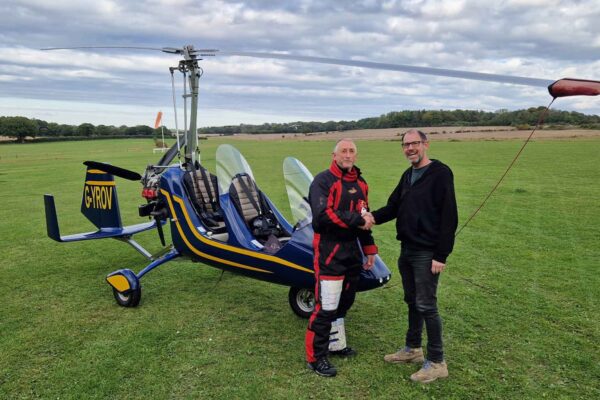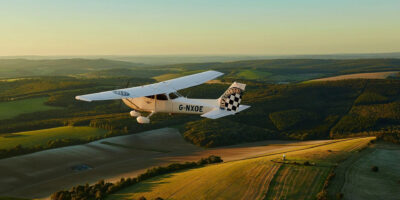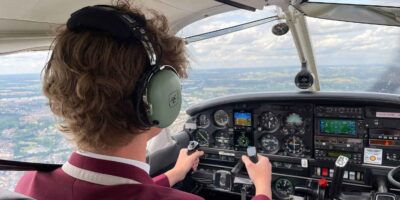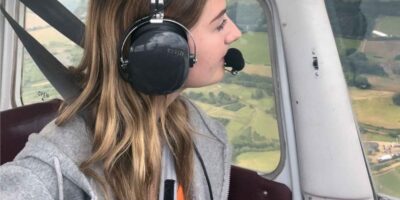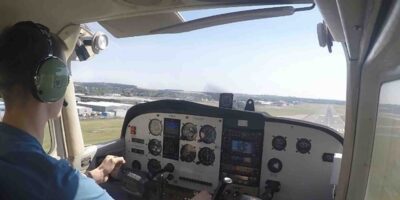To what degree can you familiarise yourself on a new aircraft type using a simulator? I had the opportunity to find out at EAA AirVenture Oshkosh 2023, where I was given the chance to undertake some Cirrus familiarisation – first in a sim, and then in the real thing.
The sim I have a go in is the ALSIM ALSR Compact. It’s the SR20, and it’s programmed to show me on the runway at Oshkosh. It’s a panoramic three-TV set-up, but not a full-motion sim, so the realism is a little limited. The graphics are detailed, though, and during the flight I get to experience a range of weather.
I can immediately see the value of the sim for getting to grips with the cockpit layout (not that this is overly complex). I learn the basics, like where the flaps and parking brake are. More importantly, had I had more time, I’d also have been able to immerse myself in the glass cockpit, which contains the same avionics – Cirrus Perspective+ by Garmin – as the real thing.
For someone like me who’s only really flown with old-fashioned instruments (maybe a G5 at a push), being able to conduct ground-based familiarisation training on the Garmin avionics would presumably shave a fair bit off the cost of doing so while flying around in the real thing.
Though I don’t get to try it, the sim also has CAPS deployment and fall simulation, which is a major bonus given that Cirrus’s famous parachute system is not something you’d get to experience except in anger.
Flying the Cirrus sim
Not having flown a Cirrus before, the first noticeable difference is the side stick. On a Cirrus cockpit tour at AERO Friedrichshafen, I’d asked Director of SR Product Line Ivy McIver how long it takes to get used to the side stick. “About 600ft,” was her succinct and, it turns out, completely accurate answer. In the sim and later in the real aircraft, the side stick proves more relaxed and natural than any other controls I’ve flown with, largely thanks to the arm rest.
What’s missing is the ‘feel’ of the aircraft, and I find that this makes it very difficult to fly the simulator instinctively in the way you would in the real thing. In the real world, whatever aircraft you’re flying, you detect the slightest changes in engine sound or vibration, both within and outside its normal range. On the take-off roll, you feel when it’s ready to fly. Even a wraparound screen isn’t enough to adequately replicate the visual references by which you instinctively judge your approach path.
Maybe it’s that the instruction isn’t clear enough, but in the simulator, I struggle with basic things like keeping the aircraft in trim and getting the power setting right to maintain level flight (it just wants to keep climbing) and descend into the circuit. I’m even inadvertently stalling on final approach – something that I’ve never even come close to doing in real life!


